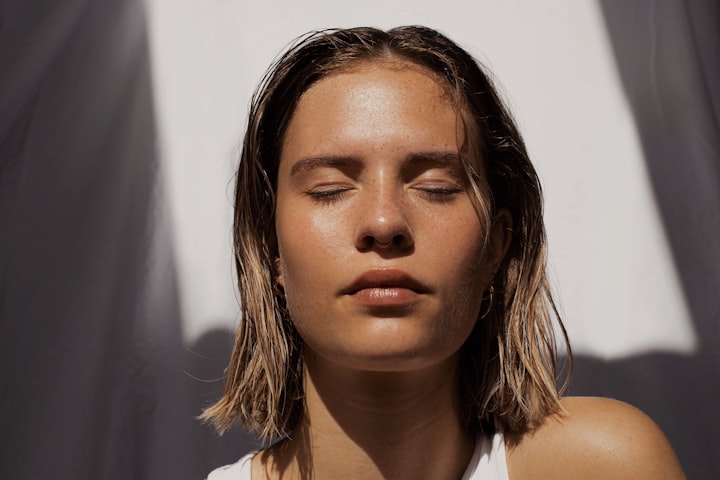
During the pandemic and in the long months we’ve spent coming out of the pandemic, our cosmetic shopping habits changed. Of course, some of this was due to the fact that we couldn’t just walk into Sephora to browse, try out samples and get free makeovers. And buying a new lipstick or eyeshadow was maybe less of a priority when we didn’t leave the house for a year!
A look at market analyses and cosmetic sales reports for the first part of 2021 reveals two separate, but intertwined priorities among consumers:
- They want skin and hair care products with active ingredients and demonstrable effects.
- They want to buy products (and from companies) that represent their values and identities.
The Zoom-Boom
Millions of workers switched from offices to WFH (work-from-home) settings during the pandemic. And for many of them, regular meetings on Zoom and other platforms forced them to look at themselves on camera — a lot. So much so that the resulting spike in requests for plastic surgery and minimally-invasive beauty treatments like Botox and fillers — among both women and men — is referred to as the “Zoom-boom.”
But the Zoom-boom didn’t just happen in the offices of dermatologists and cosmetic surgeons. It also changed the types of cosmetics products that people buy, as this sampling of trends shows:
- Active cosmetics. Also called dermocosmetics, active cosmetics contain ingredients that have a proven therapeutic effect — think hyaluronic acid, retinoids, vitamin C, etc. L’Oréal, one of the world’s biggest cosmetics conglomerates, saw a nearly 30% increase in its Active Cosmetics lines — brands you know like Vichy and SkinCeuticals.
- At-home peels and digital devices. With beauty spas and dermatologists' offices closed, sales for at-home peels for face, neck, hands and feet boomed. So did sales of LED light-therapy masks, which deliver similar results to professional skin therapies.
- Therapeutic hair care. High-quality, restorative hair care products are big sellers right now — L’Oréal reported a 21% spike in sales of its Professional Products line, which includes the Kérastase, Redken, and Matrix brands. There’s also a new focus on scalp care, as cosmetics companies and consumers are recognizing it as essential to healthy hair and overall well-being.
Consumer Mindfulness + Brand Transparency & Identity

Psychologists and sociologists will no doubt spend decades studying the cultural effects of the 2020-2021 Covid-19 pandemic. What we know already is that the circumstances of the last year caused many of us to look inward and consider what really matters in life. For many, personal well-being and that of the planet and everyone living on it are inextricably linked. And our cosmetic buying trends reflect that.
- Eco-lution. In what Mintel Beauty & Personal Care calls a beauty “eco-lution”, consumers want brands to be transparent, not just about their ingredients but also their labor and manufacturing practices and corporate culture. And they’re willing to pay more for “peace-of-mind“ purchases.
- Natural & organic surge. Consumer mindfulness really comes into play here, as cosmetics purchasers seek out natural and organic products that they perceive are better for their skin and better for the planet. Market analysts predict this segment to expand by $20 billion by 2027.
- Who’s behind the brand? An increased awareness in racial and economic disparities has more consumers looking at the company behind the product. They’re anxious to buy from companies whose values and identity “look” like their own. That may mean buying from Black-owned businesses, indie brands and local producers, or brands that give back to their communities.
At Goldn, we think the time is ripe for small producers and entrepreneurs to introduce their cosmetics brands to the market.
The buying public has evolved in this strange past year, and they’re ready to spend money with brands that give them what they want. The sweet spot is right about here:
- Producing personal care products with quality ingredients that offer demonstrable effects
- Doing so in a manner that serves the greater good
The great part about creating a new cosmetics product — or any product, for that matter — is that consumers tell you what they want. Now it’s up to you to give it to them.
The Goldn Effect
We are on a mission to empower Creators and Beauty Brands can create cosmetics confidently & collaboratively—reducing risk, complexity, and the time it takes to get to market.
Get started for Free with the Goldn Product Builder
About the Creator
Goldn
Goldn was founded in 2021 with a straightforward mission: To create the simplest, most collaborative product-building platform. The Goldn goal is to provide all the tools to enable beauty brands to collaborate better with partners.






Comments
There are no comments for this story
Be the first to respond and start the conversation.